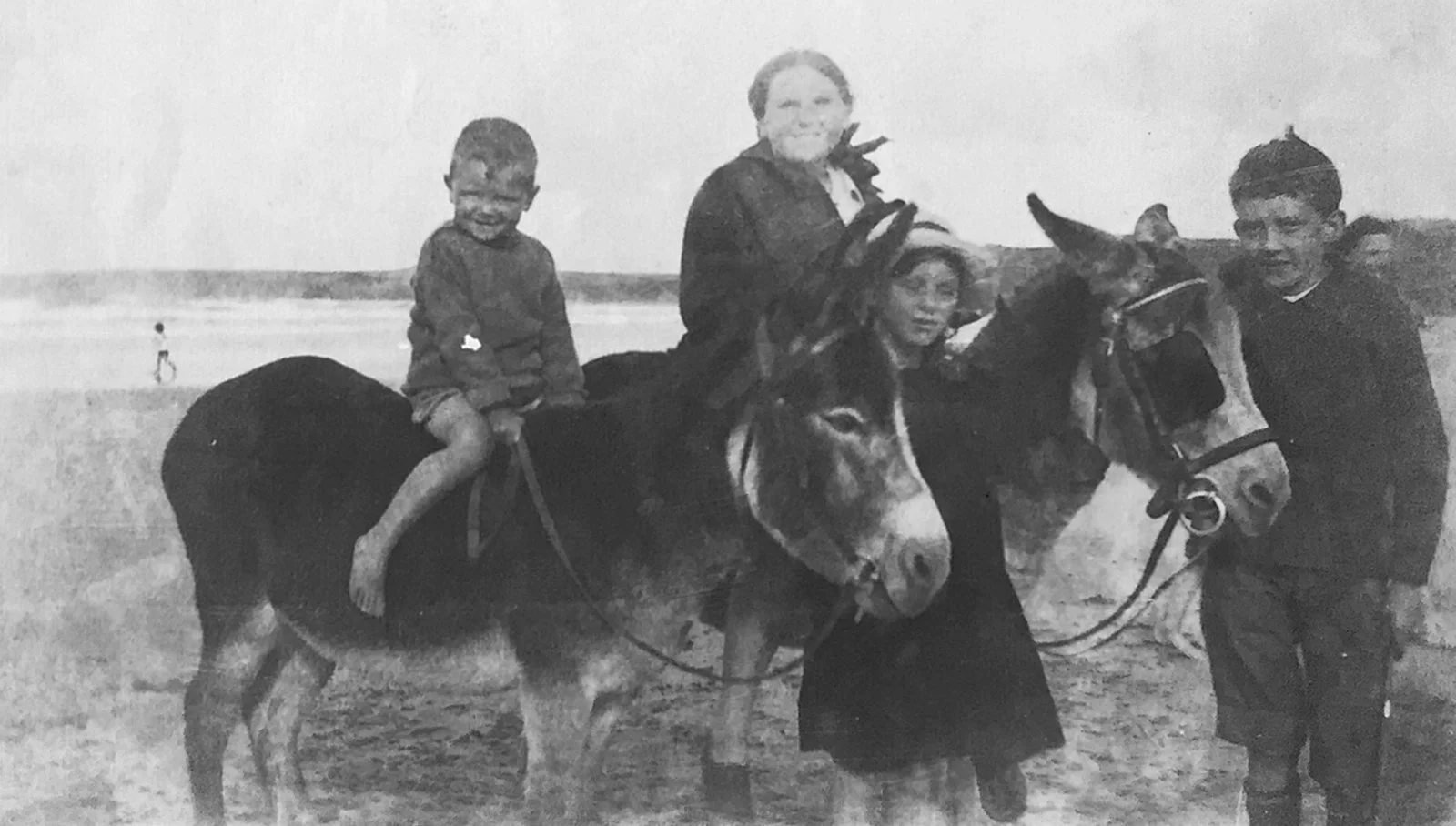Discovering Stories in Family Photographs
Photographs from your family archive are a great way to access a memory or discover a story.
Donkey riding somewhere in the UK. Photo: My mum’s family archive. Date unknown.
A Day at the Beach
Being British, I'm very used to a cold day at the beach where the wind blows you sideways and knocks the breath right out of you.
I love scratchy sand and smooth pebbles and standing in the sea up to my knees feeling the water drag seaweed between my toes. There's something about the thin horizon line curving gently in the distance that pushes my thoughts out of the earth and into the larger universe.
This week's picture is from my family archive. I must have scanned it from my mum's collection. No one knows who these children are or where they are. I'm imagining it's cold looking at their long sleeve sweaters. The young boy astride the front donkey looks pleased as he squints into the sun. The older girl behind smiles dutifully at the camera.
For this week, try to write a memory. Your memory might be true or false but take the photo above as your starting point. Bring weather into the mix and try to give your piece some emotional weight by using concrete details. Write about people, objects, animals. Things you can see, hear, smell, touch and taste. I've been reading about how to bring the sensory experience into writing. If you write abstractions or generalisations, your story will lack depth and emotion. It'll be hard to care about any of your characters or their journey. For your writing to carry emotion you have to use your senses. And to do that, you need to notice the world.
"...you can't attach an emotion to an abstraction or intellectual idea. There's no "stickiness" there. It won't work. Emotions need to be attached to things of this world: things as mundane as tables and chairs and trees and flowers. Innocuous things...until we've imbued them with the power of our imagination."
Does that make sense?
Have a go. You can share how you get on in the comments below.


